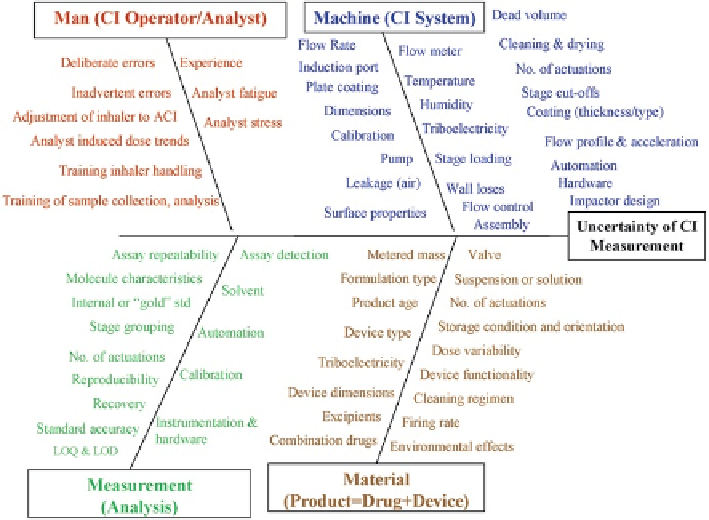Biomedical Engineering Reference
In-Depth Information
Fig. 4.2
Ishikawa cause and effect diagram for CI method variability (
From
[
2
]—
used by
permission
)
4.2.1
Contribution to Variability from “Man”
Performing a CI measurement requires several manual operations, such as impactor
assembly, connections to vacuum valves and pump, adjustment of airflow rate,
inhaler manipulation and actuation, quantitative recovery of the deposited API,
dilution for subsequent HPLC-spectrophotometric assay of API, or other types of
analysis. Human involvement in these steps, both due to imperfect technique and as
a result of unintentional mistakes, increases the likelihood of bias and increased
variability even when adequate precautions are taken [
3
]. Semi- and fully automated
systems are part of the answer to minimize operator-based variability, but they are
relatively expensive, especially full automation, and so unlikely to be available to all
except the largest organizations.
Bonam et al
.
went on to conclude that despite these alternatives, the conventional
ACI, NGI, and other manual systems based on highly laborious methods are likely
to remain in use by most organizations for the foreseeable future, especially for
regulatory purposes [
4
]. They also emphasized that man-related variability can be

Search WWH ::

Custom Search